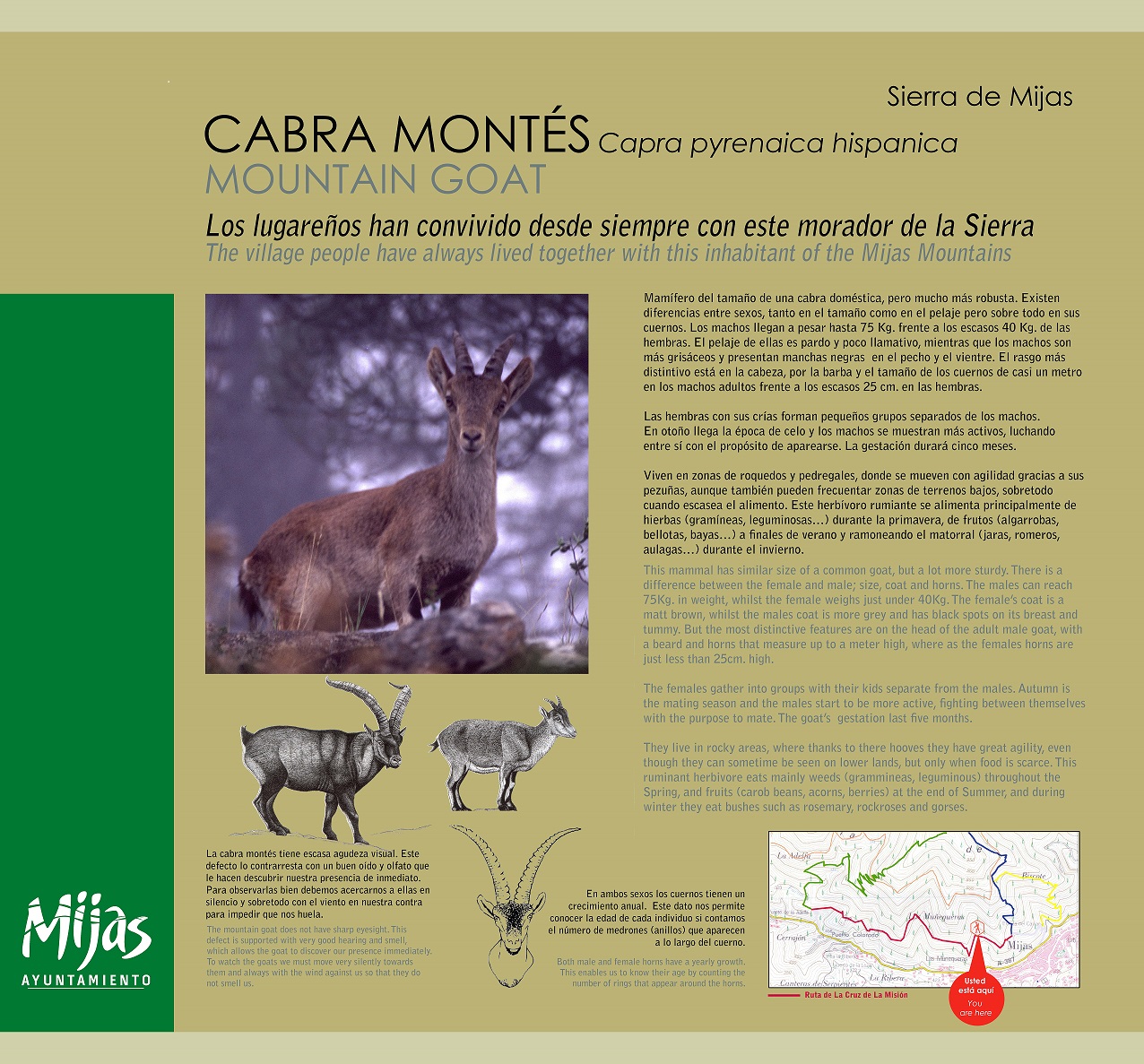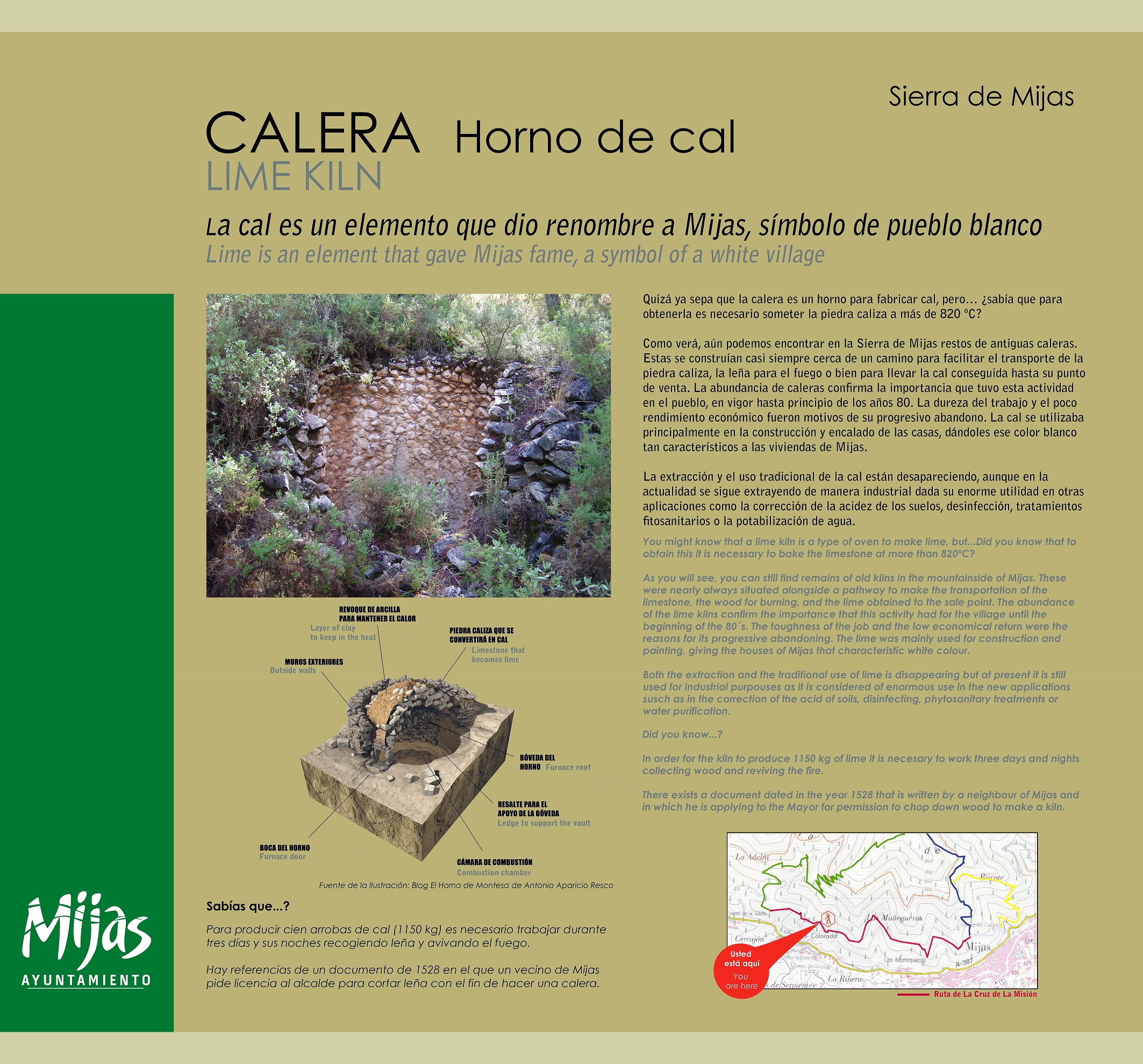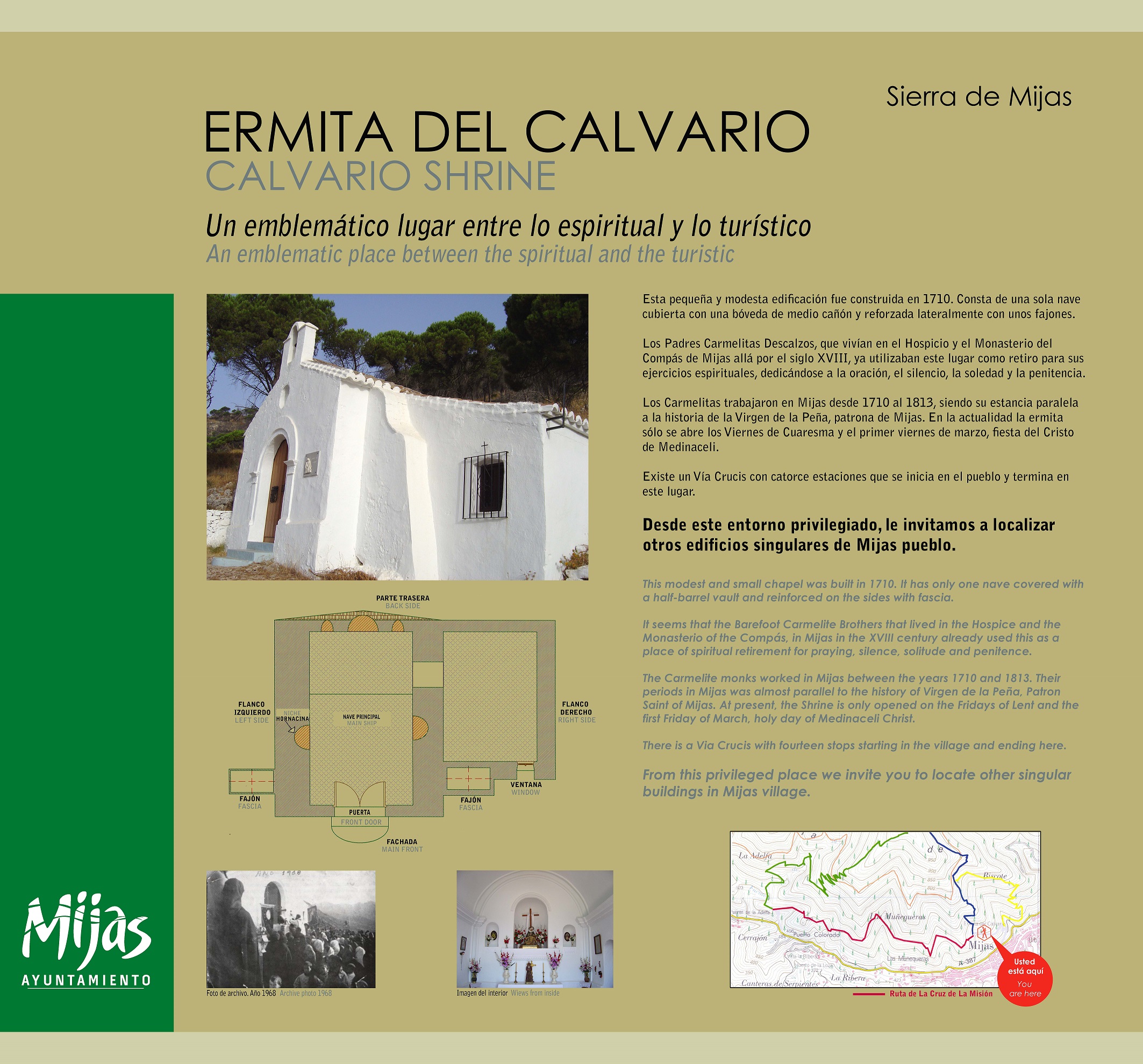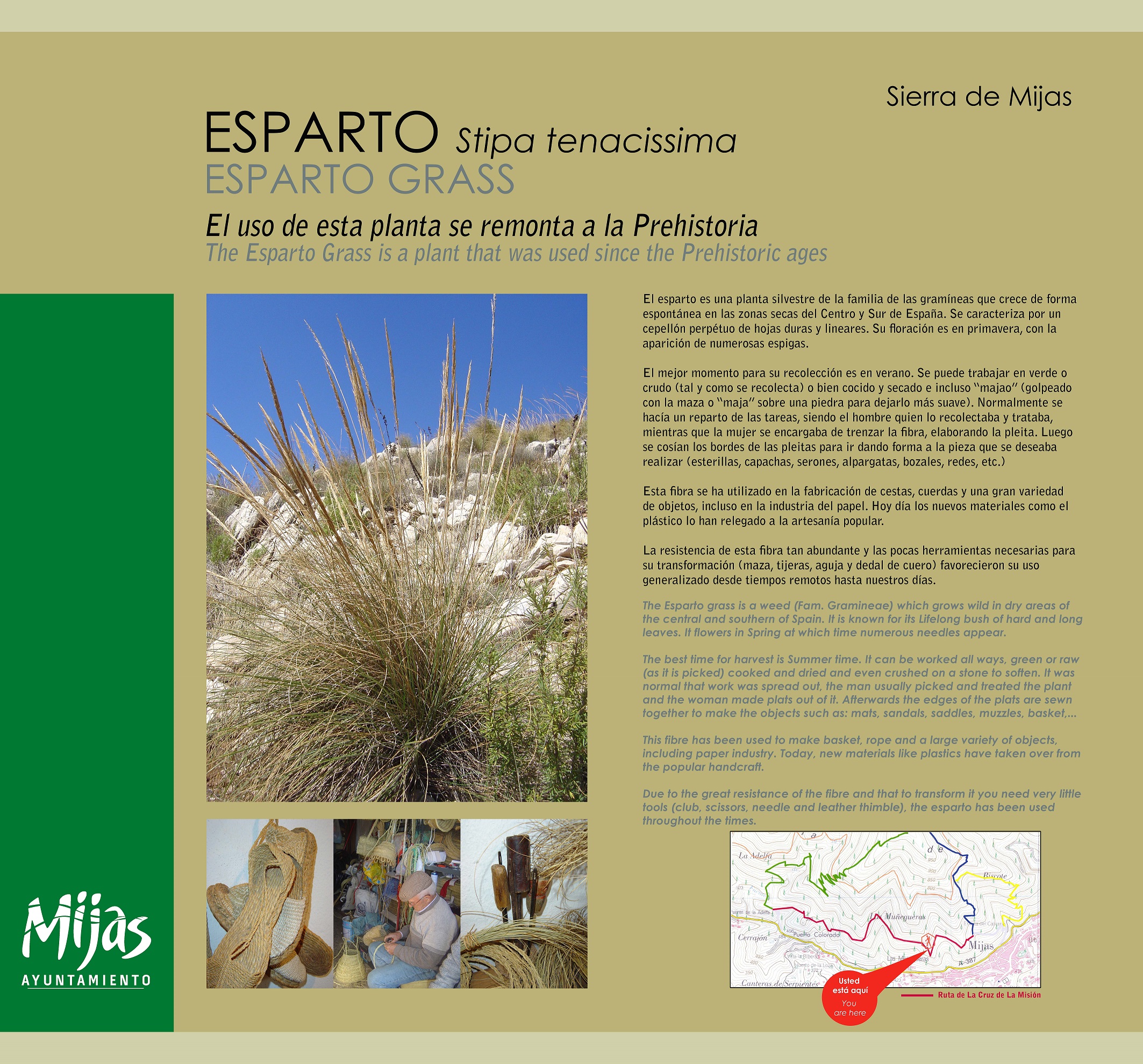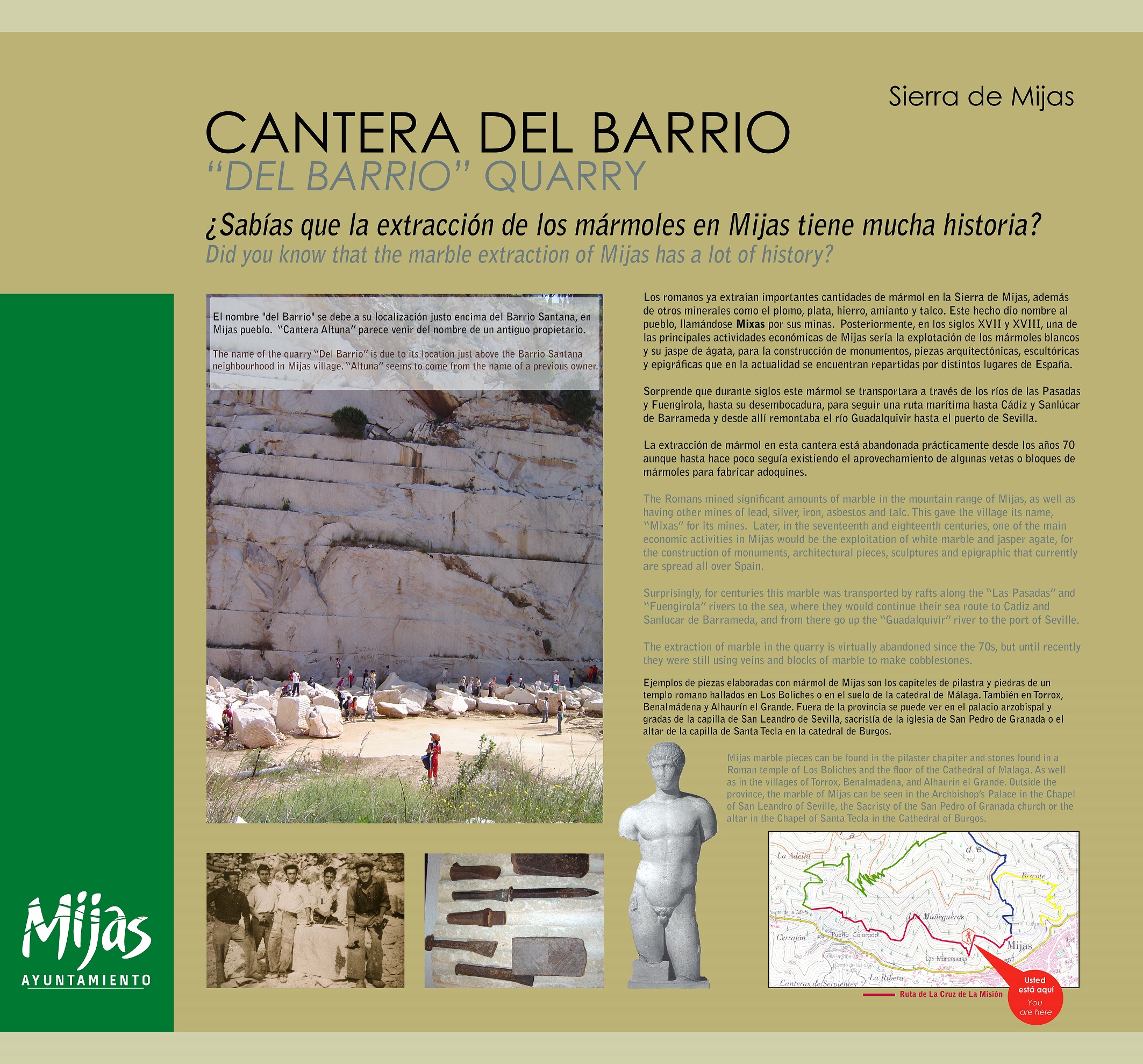Mijas - Sierra de Mijas (Mijas mountain range)
MIJAS, SENSATIONS ALL YEAR ROUND - TRAKING
The “Sierra de Mijas” is a limestone mountain chain running parallel to the coast, creating a natural balcony over the Mediterranean having a high degree of biodiversity.
The Villa of Mijas is located at the base of this beautiful sierra, which constitutes the most important greenbelt of the Costa del Sol and is a great sample of Mediterranean Ecosystem.
At its middle and lower latitudes there’s a large extension of replanted pine wood dating from the mid-20th Century, along with carobs (Ceratoniasiliqua) and wild olive trees (Olea europaeavar. sylvestris), they’re an important food source for birds such as coal tits (Parus major), robins (Erithacusrubecula), crossbills (Loxiacurvirostra) and blue tits (Parus caeruleus) among others that find refuge in these woods. A walk through any of the many paths and lanes that traverse this natural enclave allows the visitor to sense the unmistakable smells and fragrances coming from the thin brushwood growing bellow the cover of the trees: Andalusian thyme (Thymbra capitata), rosemary (Rosmarinus officinalis), marjoram (Thymus mastichina), Spanish lavender (Lavandula stoechas), rua (Ruta chalepensis), fennel (Foeniculum vulgare), mullein (Verbascum giganteum), fan palm (Chamaerops humilis), esparto grass (Stipa tenacissima) among others, are species which have always been present in the stores of our ancestors, being an endless source of traditional homemade remedies for many an ailment, because of their well know healing properties.
As part of the pasture and in the clearings of the woods, the visitor can behold one of the most evolved families of the plant kingdom: the orchids, which along with the endemic botanical species which thrive because of the geological and climate singularities of this land, constitute the greatest botanical wealth of the area.
As the visitor approaches the submit of “Pico Mijas” (Mijas Peak) which, standing 1,150 m. above sea level, makes for an exceptional vantage point in the whole province, he/she can experience a face to face encounter with kestrels (Falco tinnunculus), golden eagles (Aquila chrysaetos) and booted eagles (Hieraaetus pennatus), in a natural setting in which the tree layer is dominated by holm oaks, some of their trunks are inhabited by genets (Genetta genetta) whom wait patiently for some absent minded dormouse to pass by and hunt it before an eagle-owl (Bubo bubo) does. Holm oaks (Quercus rotundifolia) is escorted by dense and bushy thicket consisting mainly of kermes oak (Quercus coccifera), mastic (Pistacia lentiscus), juniper (Juniper usoxycedrus), pistachia-tree (Pistacia terebinthus), flax-leaved daphne (Daphne gnidium) and rock-rose (Cistus).
The walk finishes at dusk with the sound of pebbles rolling down the ravine, released by the nimble limbs of the Spanish ibex (Capra pirenaica hispanica) during its usual nightly sorties in search of water.
INFORMATION ABOUT THE MOUNTAIN GOAT
INFORMATION ABOUT THE LIME KILN
INFORMATION ABOUT THE CALVARY SHRINE
INFORMATION ABOUT THE ESPARTO GRASS
INFORMATION ABOUT THE MARBLE QUARRY
